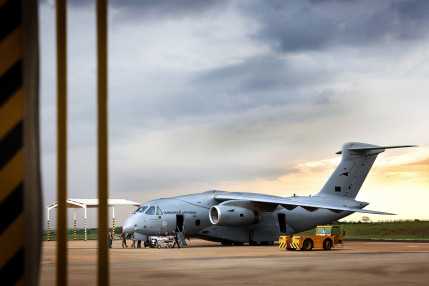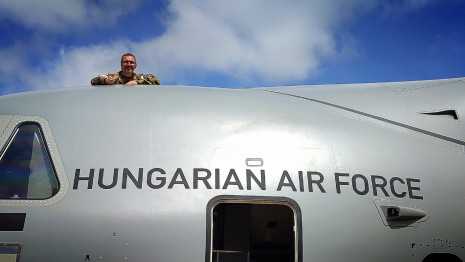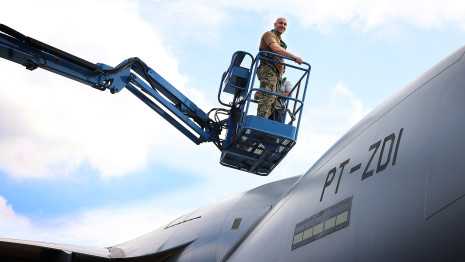KC-390: comprehensive inspection in Brazil
Text: Eszter Bányász | Photo: Antal Kazi | 11:16 November 10, 2025There are many interesting details about the first medium-size military transport aircraft developed in full compliance with 21st century requirements, the KC-390 produced by Brazilian company Embraer. Hungary has purchased two planes, of which the second is scheduled to be delivered to the Kecskemét-based HDF 101st Aviation Wing in late November.

Founded in 1969, the Empresa Brasileira de Aeronáutica today has grown into the third largest aircraft manufacturer in aviation industry. Since its privatization in 1994, the previously known acronym Embraer has become its official designation, under which it has gained significant international reputation in the market during its already 55 years of operation. With the design of the KC-390, this success extended to the defence industry, particularly in Europe based on current trends, and Hungary’s commitment to the type played an important role in it.
Most countries have separately functioning civilian and military aviation authorities, the latter being responsible for the safety, regulation and supervision of military and other state air traffic. One important part of their scope of duties is the type certification of new military aircraft prior to their commissioning, and the organization designing and manufacturing them is to undergo a similar process. In Hungary, this task is performed by the MoD State Aviation Department.
If the military aviation authorities of two states mutually recognize each other’s operating procedures and regulations, this at once entails that they mutually recognize the certificates issued by the other. For this reason, the choice of the KC-390 Millennium by the Hungarian Defence Forces was a big breakthrough in the European market. Thanks to the official supervision of the C-17 Globemaster III heavy airlifters, the MoD State Aviation Authority was among the first military aviation authorities to earn NATO certification, so several partner countries consider the inspections approved by the Hungarian authority as significant.

The experts of the MoD State Aviation Authority continue their work during the handover-takeover of the aircraft at the Embraer industrial complex in Gavião Peixoto. Here, the staff is basically responsible for manufacturing the main component parts, assembling the KC-390 and performing the full scale of flying tests, including examinations and tests that are indispensable for delivering the aircraft to customers.
The Hungarian delegation traveling to Brazil to perform the final acceptance inspection of the second aircraft includes experts from several organizations. The staff of the HDF Logistic Support Command Quality Assurance Directorate ensures quality compliance of all aircraft accessories, which involves the inspection of everything from crews to wires to the full airframe structure and the materials provided by the manufacturer for its repair, such as paints, for example.
This is because based on the needs of client countries, the Embraer-produced KC-390s do not only differ in their configurations but also in their paintings. The cargo aircraft of the Hungarian Defence Forces have received the air superiority grey paint which is characteristic of fighter jets, among them, the Gripens. Thanks to its light, bluish-greyish hue, it ensures lower visibility in the sky. Used expressly on military aircraft, this paint has some hidden advantages, too: for example, it reduces aerodynamic heating and the infrared signature of the aircraft (i.e. its detectability by thermal imaging sensors) as well as its radar cross-section.

From the aeronautical engineering point of view, the Millennium is the “Swiss army knife” of 21st military cargo aircraft. Its modernity and versatility results in extremely complex systems, which were inspected during the handover by airmen of the Aircraft Maintenance Battalion, HDF 101st Aviation Wing, and also by an aircrew member of the unit.
The aircraft has a number of special features designed to meet the challenges of our age. These include the 150-kg, seven-centimeter-thick multi-layered windscreen of the cockpit, the removable armor protecting the computer center in the nose, and the On-Board Inert Gas Generating System (OBIGS). The latter filters out oxygen from the environment of the propellant in the fuel tanks and replaces it with nitrogen, thereby reducing the risk of fire and explosion.
The entire inspection, including the examination of the documentation takes two full weeks, after which preparations may begin for the aircraft to be flown to Hungary.